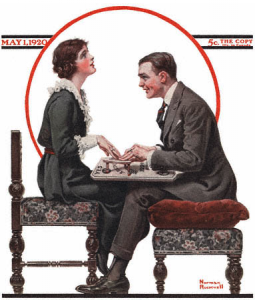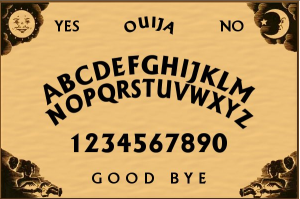“The Cabaret of Ghosts is running performances day and night”
In 1920, the Ouija board was all the rage. Fingertips poised on the pointer, legions of Americans glided their way through its alphabet, to yes, no, and eventually to goodbye.”Everybody’s doing it,” one journalist reported. “It is the new fairyland. It is the universal amusements. The Cabaret of Ghosts is running performances day and night…Telephones are rapidly falling into the discard; men, women, and children ring up Hyper space and talk with their ancestors and their prenatal souls. Book are being written with the aid of ‘controls’; the stock market has abandoned the ticker for the ouija bpointer; the weather forecaster has tossed his maps and wind-measures into the river and gets his predictions from the spirits.”
Named with a combination of the French oui and German ja, inventor William Fuld patented the device at the end of the 19th century. Its popularity has come in waves ever since. In 1920, it was used as a way of communicating with loved ones lost on the front in WWI. Sales peaked again in 1929, at the beginning of the Great Depression, again in 1944, at the height of WWII, and in the mid-Sixites, in sync with that decade’s occult explorations.
The earliest spirit boards were made in ancient China. Greek philosopher Pythagoras and his followers used a similar device in the 6th century BC. And at the end of the 19th century, Sears Roebuck was selling a variety of different spirit boards. But none matched the mysterious, long-lasting fascination of the Ouija.



Comments